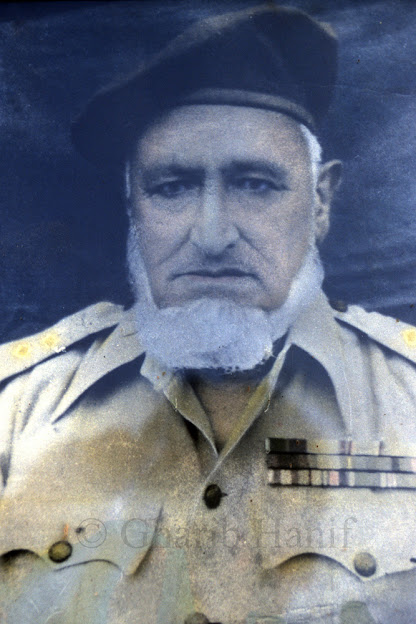Hast-o-Bood Part-24
Chapter IV
Historical background and brief overview of the state of Jammu and Kashmir
Dargah Hazrat Bal, Srinagar
Khwaja Sahib fell ill as soon as he reached Lahore while enduring the hardships of travel. Official emissaries also reached Lahore soon and reached Delhi in the service of the Emperor of India with Khawaja Nooruddin Aisha Bari along with an Abyssinian slave and Moe Mubarak. Khwaja Sahib succumbed to his injuries. Emperor Mohi-ud-Din Aurangzeb visited Muay Mubarak with great enthusiasm, devotion and respect and ordered that this rare divine gift be taken to Khwaja Moin-ud-Din Chishti at Ajmer Sharif and preserved for the visit of God's people. The order of Shah Waqt was immediately complied with. But just nine days after Muay Mubarak reached Ajmer Sharif, the emperor visited the Holy Prophet (sws) in a dream and he ordered that Muay Mubarak be sent to Kashmir immediately. As soon as he woke up from his dream, the emperor, in obedience to this edict of the Prophet, bestowed the Khalat on the Abyssinian slave The body of Nooruddin Aisha Bari was also sent to Kashmir at the same time. Along the way, the people chanted God's blessings and were blessed with the blessings of visiting the blessed hair. Eventually, in the presence of a Jim Ghafir, Sheikh Muhammad Chishti Radhune, the spiritual leader of the State of Kashmir from Hirapur, carried the ark on his head and carried it to the Hazrat Shah Naqshband Monastery in a grand procession. Where he was allowed to stay temporarily for public and private purposes. Later, in consultation with the elders of the state, Mughal Nazim of Kashmir Fazil Khan Sadiq Khan acquired a plot of land in the vast garden on the west bank of Lake Dhal Srinagar as a gift and built Hazrat Bal Dargah there which was completed. But Muay Mubarak was transferred here. Emperor Mohi-ud-Din Aurangzeb dedicated three villages as jagir for the service and management of this shrine and this jagir remained during the Sikh rule. Sheikh Muhammad Chishti Radho remained the custodian of the Dargah throughout his life. After his death, Khawaja Nooruddin Aisha Bari's son-in-law Sheikh Mohammad Bolaq Bande became the trustee and this position has been passed down from generation to generation. At the shrine of Hazrat Bal Srinagar, on the twelfth and thirteenth day of Rabi-ul-Awal, the Urs days of the Righteous Caliphs, the twenty-sixth and twenty-seventh day of the month of Rajab.
After the emperor Mohi-ud-Din Aurangzeb Alamgir, Prince Muhammad Moazzam ascended the throne after a battle with his brothers Muhammad Azam and Kambakhsh. During his reign he left for Lahore from Delhi in the early years of 1712 AD to visit Kashmir, where he fell ill and died a few days later on 27 February, 1616 AD. Later, Jehandar Shah and Farrukh Sir became the crown princes of the Indian state. But their governments did not last long. Thus the Mughal rule declined. Which was completely wiped out by Nadir Shah's invasion of India. Nadir Shah was killed in the year 1161 AH and was replaced by Ahmad Shah Abdali. [1] At that time, Kashmir was ruled by Safdar Jang. After that, Nawab Al-Dukli Khan became the Nazim and his deputy Mir Muqeem became Kant, who not only reduced the forces in Kashmir but also reduced their salaries by austerity measures. As a result, the forces changed and they revolted under the leadership of Sardar Abul Qasim. As a result, he gained complete control over the administration of the state. And thus the connection of Kashmir with the center of the Sultanate of Delhi was completely cut off. In those days Ahmad Shah Abdali was residing in Lahore. He was carefully studying the situation in Kashmir. As soon as he became aware of the tendency of the majority of the people, he decided to take advantage of the public unrest and under the leadership of his Afghan chief Abdullah Khan Ishq, set out on an expedition to Bhimber in 1753 AD. Which was successful and thus the state of Kashmir came under the control of the Afghans. After the conquest of Kashmir, Sardar Abdullah Khan Ishq appointed his deputy Sukh Jeewan Mill as the Nazim of Kashmir and returned to Kabul himself. Sukh Jeevan Mill ruled the state from 1774 AD to 1764 AD. The last Afghan ruler of the state of Kashmir, Sardar Abdul Jabbar Khan, was the real brother of the minister of the Kabul Sultanate. He was a very luxurious, oppressive, cruel, harsh and brutal man. Every class of subjects was harassed by him. And he desperately wanted freedom from his clutches of tyranny. Eventually a delegation led by Kashmiri Pandit Berber from Kashmir visited Maharaja Ranjit Singh at the Lahore Darbar and asked for help in rescuing the Afghan ruler from the clutches and assurances of all kinds of help from the people of the state. Maharaja Ranjit Singh, in the hope of gaining wealth and wealth, immediately turned to aid and an army of 30,000 cavalry, led by one of his chiefs, Diwan Chand Zafar Jang, came to the aid of Raja Gulab Singh Dogra [2], Who had been employed in the forces of Maharaja Ranjit Singh from 1811 AD, sent Raja Hari Singh Nalwa, Sardar Jula Singh, Sardar Hakim Singh Chhani and other Sardars to Attari to conquer Kashmir.
To be continued …..
[1] ... Aina Kashmir, by Muhammad Abdullah Qureshi
[2] ... Maharaja Gulab Singh Bahadur, author of Pandit Salgram Cole, page number six.
Note: It is not necessary that the blogger is agreed with the text of the Book.




Comments
Post a Comment